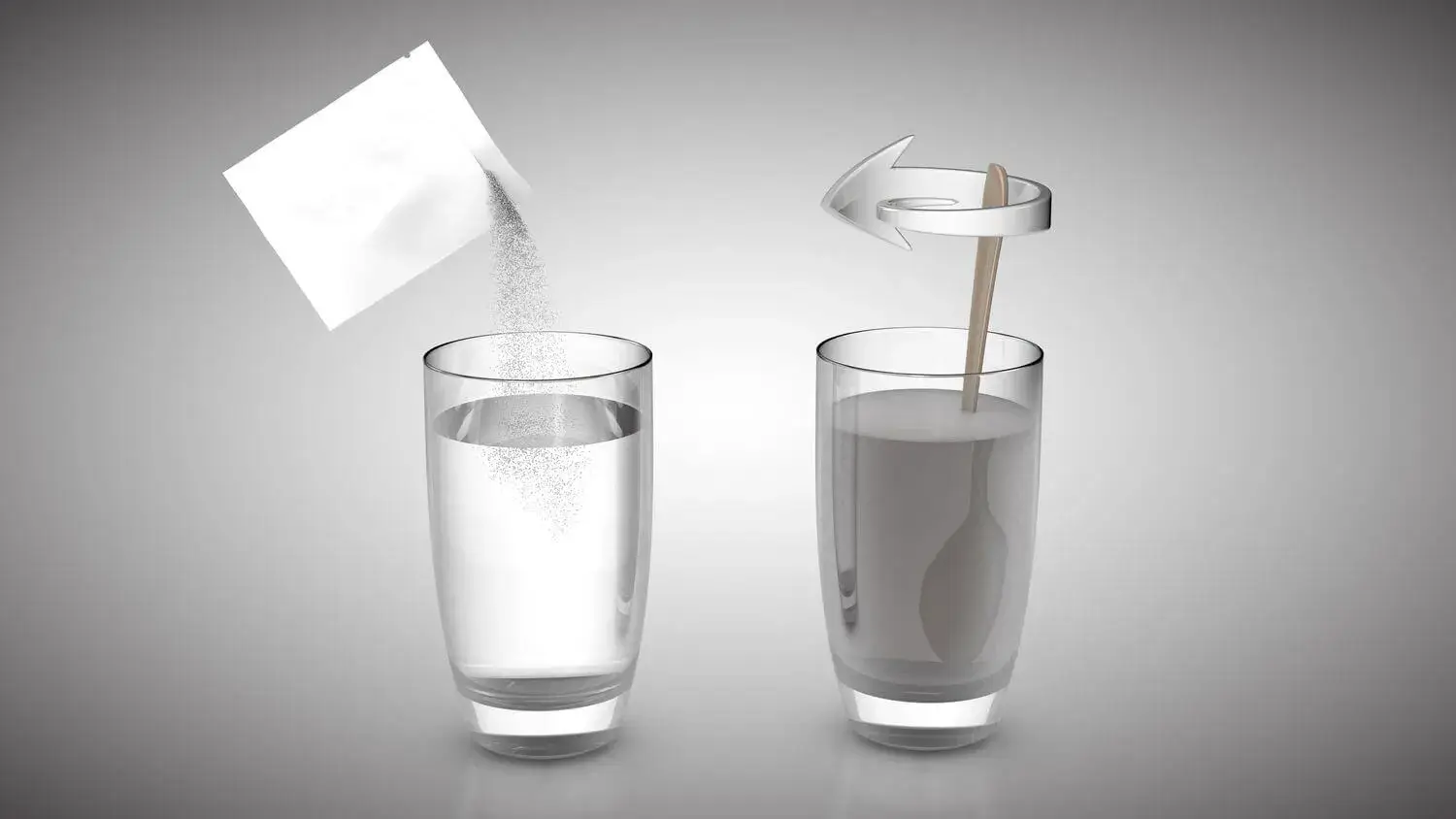The main difference between suspension and solution is that suspensions are heterogeneous mixtures with visible particles suspended in a liquid medium. Whereas solutions are homogeneous mixtures with uniformly dispersed particles.
The other significant difference between them is that suspensions exhibit the Tyndall effect, which is the scattering of light due to large particles. Solutions, on the other hand, do not display this effect as their particles are too small.
In the realm of chemistry and science, substances can exist in various forms. Two common forms are suspensions and solutions. These terms refer to how particles are dispersed in a solvent. In this article, we will explore and compare suspensions and solutions in a tabular form to provide a comprehensive guide to their differences.
Suspension vs Solution
| Aspect | Suspension | Solution | |
| 1. | Definition | Heterogeneous mixture with visible particles suspended in a liquid medium. | Homogeneous mixture with uniformly dispersed particles (atoms, ions, or molecules) in a liquid medium. |
| 2. | Particle Size | Large particles (>1,000 nm). | Small particles (<1 nm). |
| 3. | Clarity | Opaque or cloudy. | Transparent or clear. |
| 4. | Tyndall Effect | Exhibits Tyndall effect (scattering of light). | Does not exhibit the Tyndall effect. |
| 5. | Stability | Unstable, needs constant agitation. | Stable, no need for agitation. |
| 6. | Solute-Solvent Bond | Particles are not dissolved in the liquid. | Particles are dissolved in the liquid. |
| 7. | Separation Method | Gravity, filtration, centrifugation. | Evaporation, distillation, filtration. |
| 8 | Suspension Agent | May require a stabilizing agent to prevent settling. | No suspension agent is needed. |
| 9. | Concentration | Particle concentration can vary widely. | Concentration is uniform throughout |
| 10. | Examples | Muddy water, orange juice with pulp. | Saltwater, sugar in water. |
Detailed Explanation of 10 Differences Between Suspension and Solution:
- Definition: Suspensions are heterogeneous mixtures with visible particles suspended in a liquid medium. Whereas solutions are homogeneous mixtures with uniformly dispersed particles.
- Particle Size: Suspensions contain large particles, typically over 1,000 nanometers in size. While solutions have much smaller particles, usually less than 1 nanometer.
- Clarity: Suspensions are often opaque or cloudy due to the presence of visible particles. While solutions are transparent and clear.
- Tyndall Effect: Suspensions exhibit the Tyndall effect, which is the scattering of light due to large particles. In contrast, solutions do not display this effect as their particles are too small.
- Stability: Suspensions are generally unstable and require continuous agitation to keep particles suspended. Solutions, on the other hand, are stable and do not require agitation.
- Solute-Solvent Bond: In suspensions, particles are not dissolved in the liquid but remain suspended. In solutions, particles are dissolved in the liquid.
- Separation Methods: Separating the components of a suspension can be achieved through gravity settling, filtration, or centrifugation. Whereas, solutions can be separated through methods like evaporation, distillation, or filtration.
- Suspension Agent: Some suspensions may require a stabilizing agent, such as a thickening agent, to prevent settling. However, solutions do not require such agents.
- Concentration: The concentration of particles in suspensions can vary widely, leading to variable properties. In solutions, the concentration remains uniform throughout the mixture.
- Examples: Common examples of suspensions include muddy water and orange juice with pulp, while saltwater and sugar dissolved in water are examples of solutions.
That’s it for this post. If you like this article, share it if you like, like it if you share it. You can also find us on Mix, Twitter, Pinterest, and Facebook. Hey man, If you have come this far, do give us feedback in the comment section. It would make my day. You can also make a donation. Your donations will help us to run our website and serve you BETTER. Cheers!!!
You might also like:
- Difference Between Suspension and Colloid in Tabular Form
- Difference Between Emulsion and Suspension in Tabular Form
- Difference Between Homogeneous and Heterogeneous Mixtures with Examples
- Difference Between Miscible and Immiscible Liquids in Tabular Form
